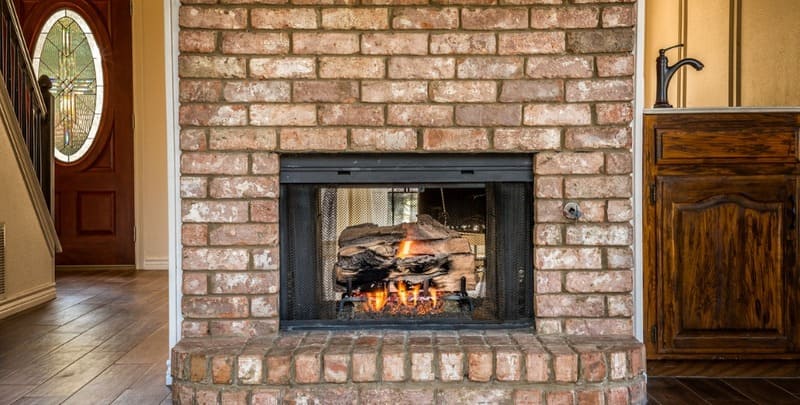
6 Things You Should Know About Space Heaters
Gas-powered space heaters are a convenient and popular way to heat your home during the colder months of the year. While snuggling beneath a blanket can be enjoyable, you can’t stay there indefinitely.
When you get out of bed on those frosty mornings, you really need a reliable, energy-efficient source of heat.
A gas-powered space heater is a top choice when compared to other options on the market, which includes ducted heating and reverse cycle air conditioning.
While these are all viable options, let’s take a closer look at the benefits of space heaters to help you navigate the various choices and keep those winter chills away. But first of all – what exactly are we talking about when we refer to space heaters?
What is a Space Heater?
Space heater is a relatively loose term referring to a heater that is designed to heat a single space. These heaters are compact and can be electric, gas or fuel-powered portable units – which we’ll examine briefly – along with fully installed wall or recessed heaters. Some are oscillating heaters with moving fans.
While portable heaters have some advantages, it is often a temporary fix (or a necessary solution when you’re renting). First of all, let’s consider fully installed, gas-powered heaters that have waste products flued to the outside of your home. There are two main types to consider:
- Gas wall furnaces
- Gas log fireplaces (built-in and freestanding)
But what are some of the other types of space heaters on the market? Let’s take a look.
Types of Space Heaters to Consider
When it comes to staying warm during the chilly months, space heaters are a popular choice. But before you rush to buy one, it’s important to know the different types available.
Here are some key things to consider:
- Ceramic heaters: These are among the most common types of space heaters. A ceramic heater uses ceramic elements to heat up and distribute warmth evenly. A ceramic heater is energy-efficient and comes in various sizes, making it versatile for different room sizes.
- Fan-forced heaters: These heaters use a fan to blow air over a heating element, quickly spreading warmth throughout the room. They are great for providing rapid heat but can be a bit noisy.
- Radiant heaters: Radiant heaters emit heat in all directions, warming objects and people directly in their path. They’re silent and energy-efficient, making them ideal for personal heating. A great space heater for big rooms.
- Oil-filled radiators: This type of room heater uses oil as a heat reservoir and provides steady, consistent warmth. They are silent and maintain heat even after being turned off, but they take longer to heat a room initially.
- Infrared space heaters: Infrared space heaters emit infrared radiation that directly heats objects and people in the room. They’re efficient and don’t reduce humidity levels, but they are best for spot heating.
- Convection heaters: Convection heaters warm the air in the room, creating a gentle, even heat. They’re ideal for larger spaces and are often used as a whole-room heating solution.
Before choosing a space heater, consider the size of the room you want to heat, your heating needs, and safety features like tip-over protection and overheat protection.
Most space heaters will do the trick and each type has its own advantages, so pick the one that suits your situation best. Then you’ll have warm air in your living areas when you need it most.
Now that we’ve covered other models, here are six things you should really know about gas space heaters.
1. Gas Heating is Energy Efficient & Cost Effective
Gas heating is often touted by consumer advocacy groups and comparison websites as a superior option when compared to electric heaters. Despite this, many Australians continue to rely on electric heaters due to their simple plug-in-and-use setup and lower initial cost.
However, upgrading to gas heating can be beneficial for anyone looking to save energy and money on power bills and reduce their carbon footprint. The advantages of natural gas include its high efficiency and lower running costs when compared to electricity.
Gas heaters are incredibly efficient, with up to 90% of the energy consumed by gas heaters being transferred directly into heat. This is achieved almost instantaneously without requiring the heater to warm up. In contrast, electric heaters often take some time to reach their maximum heat output.
Most importantly, natural gas is generally cheaper than electricity, resulting in lower running costs. Given that heating and cooling accounts for more than 40% of household energy usage, switching to gas heating can lead to significant savings on energy bills.

2. Gas-Powered Space Heaters are Eco-Friendly
The environmental impact of burning natural gas is far less detrimental than burning coal to generate electricity. Although natural gas is a fossil fuel, its chemical composition differs from coal and releases fewer greenhouse gases when burned.
According to Energy Information Australia, modern natural gas-producing plants emit 50% to 60% less CO² into the atmosphere than contemporary coal-fired power plants.
When comparing the energy efficiency, running costs and environmental impact of gas and electricity, natural gas emerges as the clear winner. It is a cleaner and more efficient source of energy than electricity, making it a better choice for the environment.
3. Gas Log Fires Look Great
Gas log fires provide an efficient and visually pleasing way to heat up a living space or dining room, while also giving off the same charm as traditional wood-burning log fires. These heating options are available as freestanding units or built into a wall or recess, such as an existing traditional wood fireplace.
Unlike wood-burning fires, there is no need to continuously stoke the flames or to clean up the ashes, making it a low-maintenance option. The logs are purely decorative. But you can choose to have pebbles – or even nothing at all – to match your personal taste and decor.
While built-in models are a popular choice, freestanding gas log fires are a more efficient option as they radiate heat from all sides. However, they do take up additional floor space and may not be the best choice if you have young children in the house. These heaters can be difficult to childproof.
The cost of gas log fires start at around $1000, depending on the size and type of unit. Installation costs will also vary depending on whether you have an existing flue in place or require a technician to install one. However, the benefits of gas log fires are numerous, including:
- Stylish appearance
- Rapid heating capabilities
- No need to buy, carry and chop wood
- No need to clean up ashes
4. Wall Furnaces are Child Safe
Wall furnaces (aka wall heaters) are slim, gas-powered furnaces that are directly mounted on a wall. They are similar to split system air conditioners, but wall furnaces are positioned closer to the floor than the ceiling.
These spacer heaters operate by drawing in cool air through the top of the furnace, heating it in a chamber, and then directing the treated air through the bottom using an internal fan, which then goes back into the room.
Wall heaters are safe for children as the surface temperature remains cool to the touch. Some models are double-sided, meaning they can effectively heat two back-to-back rooms simultaneously. Those kinds of heating features appeal to most families.
Wall furnace space heaters come in a range of different sizes, shapes and styles, so finding one that suits your home’s aesthetics shouldn’t be difficult. Another benefit of a slimline wall furnace is that it doesn’t take up much space.
5. Portable Heater vs Flued Heater
A portable space heater has the obvious advantage of being able to deliver heated air to different rooms. They are available in various styles, such as column, radiant, convector and panel heaters, with gas-powered models being the most energy efficient. If you’ve got a cold space in the home, you can warm it up in no time.
They are cheaper to buy and don’t need to be installed, meaning more savings upfront. However, there are potential dangers if you’re using a portable unflued gas-powered model. When natural gas is burned, it produces carbon monoxide. This is an odourless gas that can cause serious health problems – and can even be fatal – if it is not discharged outside.
Some states (Victoria and Tasmania) prohibit the use of gas heaters that lack a flue. Other states have established a cap on the capacity of gas heaters that can be used inside without a flue. So, it is highly recommended to install a flue, even for a portable model.

6. Finding the Right Capacity Space Heaters for Your Home
An important aspect is working out the correct capacity space heater for your particular home.
Typically, gas heater specifications include information about the energy consumption in megajoules (MJ) per hour of heating. This data is crucial in estimating the running expenses and determining the appropriate sized heater for your space.
For example, a gas heater that uses 13-15 MJ/h would be ideal for a small bedroom or living room. A heater with more than 22 MJ/h output would be adequate for heating multiple rooms simultaneously. The main elements to consider in heater capacity are:
- Size of the room
- Number of rooms you want to heat
- Your home’s insulation
- Local climate
- Number of windows
We highly recommend conferring with a heating and cooling specialist when attempting to work out the best capacity heater for the space you wish to heat.
In Conclusion
Gas-powered space heaters offer an attractive and efficient heating performance that top most other heaters. And you’ll do it without the extra cost of an electric heater or hassle of a traditional wood-burning fire.
These space heaters come in a variety of styles to match any décor and capacities for any type of room. The many benefits of a gas-powered space heater makes it a hassle-free, energy-efficient choice.
For more details contact the heating and cooling experts at Metropolitan Air Conditioning. We’re on call 24/7, every day of the year.
Please note: This information is provided for advice purposes only. Regulations differ from state to state, so please consult your local authorities or an industry professional before proceeding with any work. See our Terms & Conditions here.
Published: 2023-03-30

































